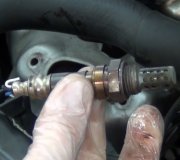Sunday, November 2nd, 2008 AT 11:33 PM
I have a 1997 Jeep Grand Cherokee (Limited) and I recently took it in for inspection. The shop said that I have a crack in the exhaust manifold. They said that it would cost $1,100 to repair. I could not afford to make the repair at the time and they said that it would be fine, but would lower my gas mileage. I am a pretty handy guy, and I am wondering how hard it would be to simply replace the exhaust manifold myself. So, first question- how hard would it be to replace myself? And second question- how do I replace the exhaust manifold. I checked it out, and a new manifold would be about $250. Can anyone tell me how to do this? Step by step instruction would be highly preferred, but a general overview would probably suffice. Thank you.


